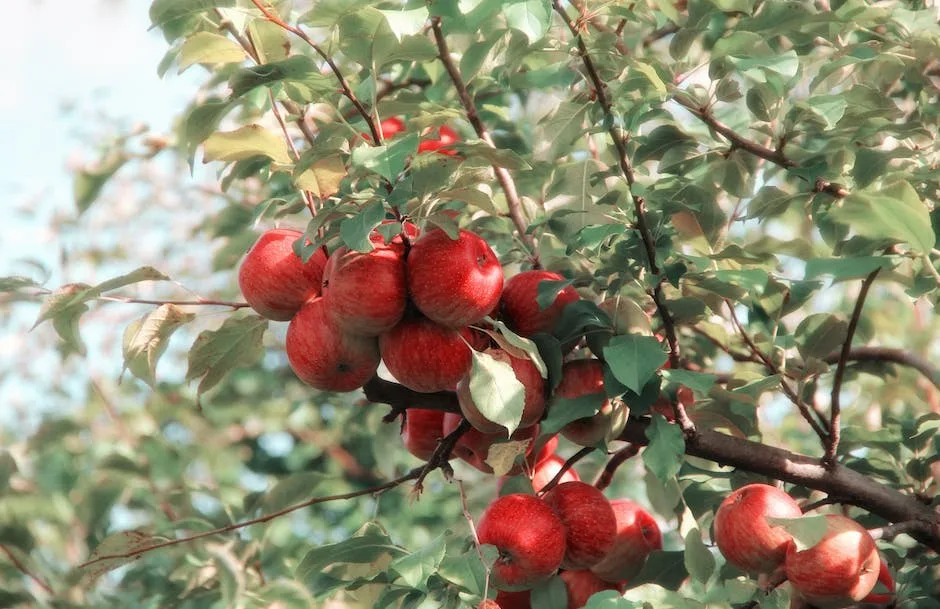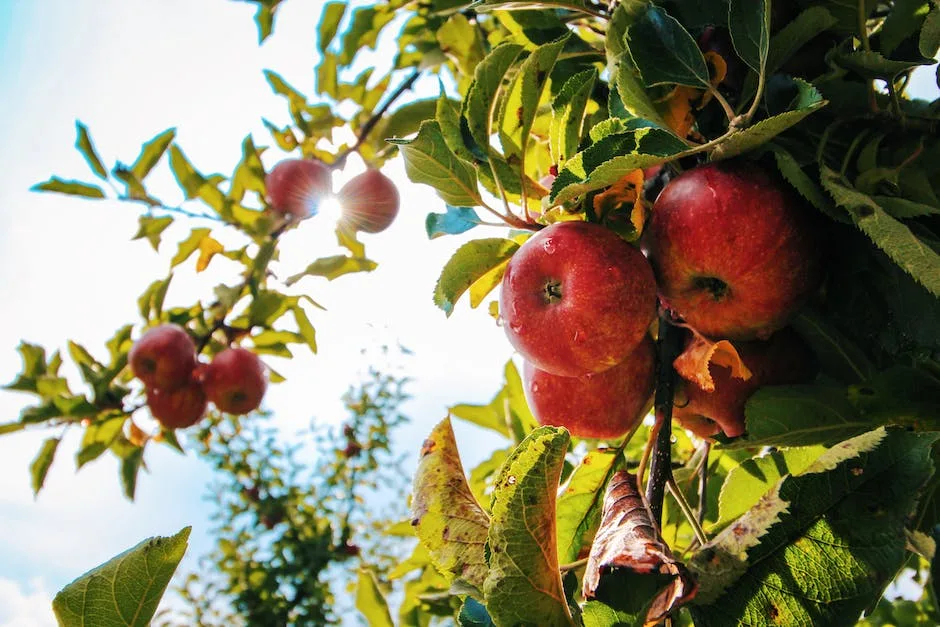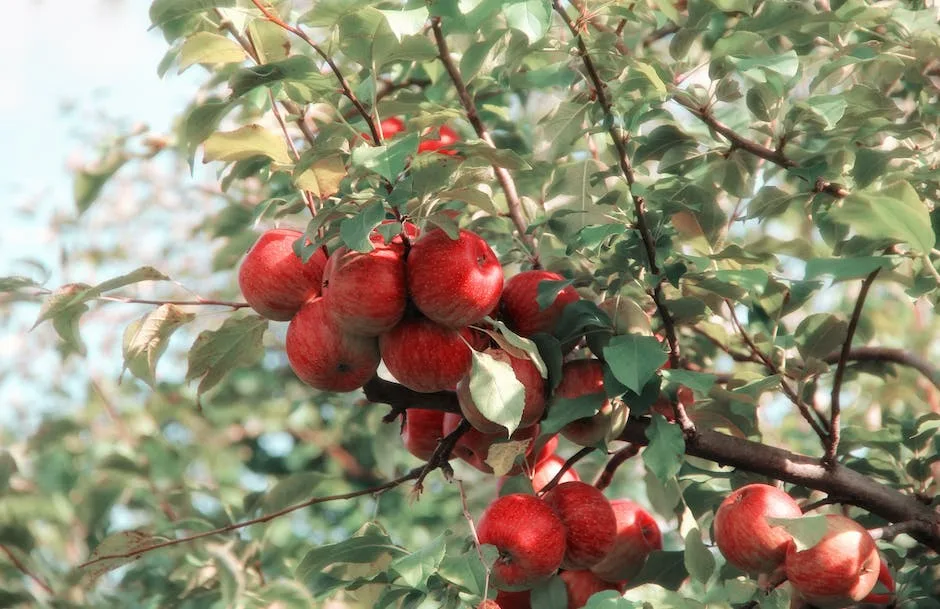While there are over 700 varieties of apples, the rootstock used for apple trees is typically rootstocks of the M.9 or M.26 variety. M.9 is a dwarfing rootstock, meaning it will keep the tree small. M.26 is a semi-dwarfing rootstock, producing a slightly larger tree. However, both rootstocks will produce a much smaller tree than if the tree was grown on its own roots. These rootstocks are chosen for apple trees because they allow for more control over the size and shape of the tree, as well as increasing the tree’s resistance to disease.
M26 is a popular rootstock for apple trees. It is very vigorous and produces a large tree. It is resistant to most apple diseases and is tolerant to drought. M26 is compatible with a wide range of apple varieties.
What is the best rootstock for apple tree?
M9 rootstock is a good choice for a small apple tree about 25m tall. M26 is ideal for espaliers and cordons. M27 is good for stepovers or trees in pots. For a large tree, go for MM111 for a tree up to 45m tall, or M25 for a large standard tree, approximately 4-5m tall.
M9 337 is the global standard for rootstock and is the most widely planted cultivar in Washington. M9 337 shows tremendous compatibility with most scions, but its susceptibility to fire blight makes it a rootstock to avoid in areas where fire blight is a concern, Auvil said.
How do you choose rootstock for apple trees
When choosing a rootstock for an apple tree, there are a few factors to consider. First, what is the soil type and climate like at the orchard site? This will help to determine what type of rootstock will be best suited for the conditions. Second, what is the apple variety that will be grafted onto the rootstock? Different varieties require different rootstocks in order to thrive. Third, what is the desired size of the tree? This will help to determine the size of the rootstock. Fourth, what type of planting system will be used? This will determine the density of the rootstock. Finally, what diseases are common in the area? Some rootstocks are more resistant to disease than others.
A commercial fruit tree usually consists of two parts: the scion, which makes up most of the tree that you see above ground-level, and the rootstock, which consists of the roots and lower portion of the trunk. The scion is the fruiting variety, and the rootstock provides support and anchors the tree in the ground.
What type of graft is best used for apple trees?
Bark grafting is one of the simplest ways to graft an apple tree. You don’t need to cut any part in this method. Instead, simply peel away some of the bark from the rootstock and insert the scion between the bark and the inner wood. Then, lash the rootstock and scion together to secure them.
Interstem rootstocks are a great way to create a custom apple tree that is well-suited to your specific region and conditions. By grafting the scion (which determines the apple variety) to the top rootstock, you can create a tree that is tailored to your needs. This is a great option for those who want to have a bit more control over their apple tree.
What are the different types of apple rootstock?
Different rootstocks will produce different sized apple trees. Trees can be broadly classified into 4 categories based on the size of the tree: dwarf, semi-dwarf, semi-vigorous or semi-standard, and vigorous or standard. These are relative terms and the actual size of the tree will depend on the specific rootstock used.
An M111 rootstock will produce a tree that bears fruit at a relatively young age. The tree will be about 70% the size of a standard apple tree.
What is the difference between M9 and M26 rootstock
M9 and M26 trees are well suited for small gardens, but they require permanent support. Without support, the tree will not be able to grow properly and may even die.
M106 is a bush rootstock for a half standard tree. It grows 14′ plus high and wide. Good for larger areas, heavy cropping. M111 and M25 are for large grassy areas, paddock, traditional orchard etc.
Does the rootstock determine the size of the tree?
Rootstocks control overall tree size, from full size (20-30′ tall) to mini-dwarf (3-5′) and have more influence on tree size than do scions. They do this largely by two mechanisms: the roots–root system, and the transport of materials for growth (water, nutrients, and growth regulators).
When grafting a plant, the rootstock must have a close relation to the scion in order for the graft to be successful. An apple rootstock cannot be grafted with a pit fruit like cherry, for example. Grafters look for naturally growing trees, a naturally occurring plant mutation, or a genetically bred plant to use as rootstock.
What is the fastest growing apple rootstock
The Gravenstein apple tree is perfect for apple growers who want to produce a lot of apples quickly. They are among the largest apple trees and can produce a sizable crop within just a few years. They are also quite hardy and can grow in most climate zones.
There are many factors to consider when choosing a good rootstock for your plant. Some important characteristics to look for include:
· Strong fibrous root system: This will help support the plant and anchor it in the soil.
· Easily propagated by cuttings: This will make it easier to produce more plants.
· Vigorous growth habit: The rootstock should be healthy and vigorous to help the plant grow well.
· Resistant to pests, disease and frost: This will help protect the plant from harm.
· Uniform growth rate: This will ensure the plant grows at a consistent rate.
What root stock do they use for fruit trees?
The common apple rootstocks known today include M9, M27, M26, MM106 and MM111 Other fruit trees have their dedicated rootstocks. M9 is the most dwarfing apple rootstock available and is used for creating very small apple trees. M27 is a semi-dwarfing rootstock, which is used to create small to medium sized apple trees. M26 is a semi-standard rootstock, which is used to create medium to large sized apple trees. MM106 is a vigorous rootstock, which is used to create large apple trees. MM111 is a very vigorous rootstock and is used to create very large apple trees.
Different species in the same genus are usually compatible for grafting because they share common characteristics. This is also true for rootstocks and scions that belong to the same botanical species. The main reason for this is that they have similar genetic makeups. This means that they will be able to share resources and information more easily, which leads to a more successful graft.
What time of year do you graft apple trees
Budding is a great way to graft in the spring, from the time the buds of understock trees are beginning to open, until blossom time. The usual time is April or early May. This method of grafting is perfect for when you only want to use a single bud, rather than a piece of stem or twig.
Apple and pear varieties are generally compatible with each other for grafting purposes. However, you cannot graft an apple scion onto a pear rootstock or vice versa. This is because the two different types of fruit trees have incompatible rootstock grafting requirements.
Are Honeycrisp apples grafted
Our Honeycrisp Apple Tree provides fresh fruit without hassle, since they’re grafted from proven root stock, with cold hardiness down to -30 degrees and known to be a heavy producer once established. For starters, our Honeycrisp Apple Trees have a longer growing season, which means you’ll be able to enjoy fresh apples for a longer period of time. Additionally, they require less maintenance than other types of apple trees, so you can enjoy your apples without having to put in a lot of work.
Stone fruit can be grafted onto other stone fruit trees. This is because they are all in the same family and have compatible genetics. However, stone fruit cannot be grafted onto apple or pear trees. This is because they are not in the same family and have incompatible genetics.
Warp Up
Apple trees are grafted onto rootstocks, which are selected for various characteristics. For example, some rootstocks are selected for their dwarfing effect, while others are chosen for their resistance to disease. Once grafted, the rootstock controls the size and vigor of the tree.
Apple trees are often grafted with different rootstocks to create different effects. The most common rootstocks used are M.9, M.26, and MM.106. M.9 is a dwarfing rootstock, meaning that it will create a smaller tree. M.26 is a semi-dwarfing rootstock, meaning that it will create a smaller tree than if the rootstock were not used, but the tree will still be larger than if an M.9 rootstock were used. MM.106 is a rootstock that produces a tree of the same size as if it were not used.
I’ve always been drawn to trees.
As a kid, I spent most of my free time outside, climbing, exploring, and trying to figure out the names of the trees around me.
That early curiosity eventually led me to study arboriculture and horticulture at Michigan State.
Later, I completed a degree in forestry at the University of Michigan.
I’ve been working in tree care and education ever since.
These days, I enjoy helping people learn more about the trees in their own backyards.
How they grow, how to care for them, and why they matter.
You don’t need to be an expert to appreciate trees.
A little curiosity goes a long way.
